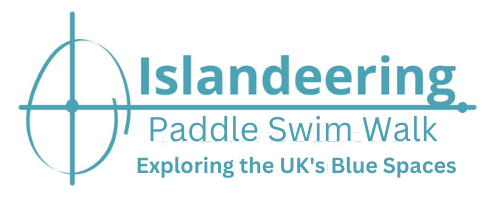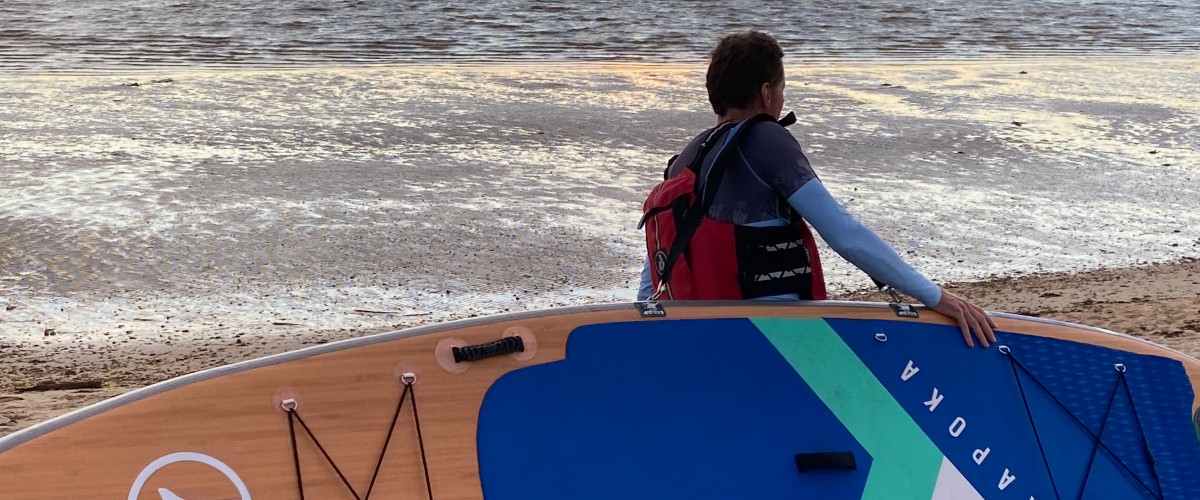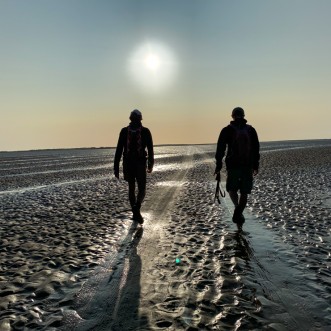Paddleboarding in Britain is a fun and exciting way to explore our amazing coast, lakes, canals and rivers and stay active. However, before you hit the water, it’s important to make sure that you have all the necessary gear with you. In this article, we’ll discuss what to take paddleboarding to ensure a safe and enjoyable experience.
Paddleboard: The first item you’ll need is a paddleboard. There are various types of paddleboards available, and you should choose one that’s suitable for your skill level and the conditions you’ll be paddleboarding in.
Paddle: You’ll also need a paddle to propel yourself through the water. Choose a paddle that’s the right length and weight for your height and strength.
Personal Flotation Device (PFD): These are mandatory for access to some locations in the UK and we recommend wearing one at all times, except if you are SUP surfing or racing where support is close to hand. Buoyancy aids come in two forms. Chest/vest buoyancy aids are designed not to obstruct paddling, can be worn like a jacket and zipped up at the front or pulled over the head with buckles to tighten; they usually have a useful front pocket. Ensure you wear a brightly-coloured, well-fitting, well-maintained buoyancy aid that is appropriate for your weight and size. Consider attaching a whistle and small strobe light for darkness. A waist belt has an inflatable sac and single-use gas cylinder, activated by pulling a cord in an emergency.
Leash: This key piece of safety equipment keeps the board close to you in the event of a fall. We recommend wearing one without exception. A useful guide to leash options is provided by British Canoeing https://britishcanoeing.org.uk/uploads/documents/SUP-SAFETY-Choosing-the-right-leash.pdf . Our choice is a leash attached to a quick-release waist belt, which is easy to detach if the leash catches on an obstruction in the water. In stronger flows it is not always easy to reach down to an ankle and release the leash. There are other quick-release devices on the market but whatever you use, practice detaching it so that it becomes second nature.
Spare fin: You never know when you might need one (and don’t forget the screws)
Sun Protection: Protect yourself from the sun’s harmful rays by wearing sunscreen and a hat. Polarised sunglasses are also great to reduce glare off the water – but keep them on a floating leash!
Water Shoes: These should be suitable for the terrain of the launching site and whether you are likely to have to portage around shallows or obstacles in the water. We use wetsuit boots with hard soles, adding neoprene socks in the winter. In the summer we find that barefoot offers the best balance and control of the board – but we always carry a pair of wet shoes for landing and portage.
Water and Snacks: Stay hydrated and fueled by bringing plenty of water and snacks with you. In the winter always take a hot drink. Hand gel is also always useful.
Dry Bag: A dry bag for your personal belongings, such as your fully charged phone in a waterproof case, wallet, keys, bivi bag/foil sheet, basic repair kit, knife, and a karabiner to attach your drybag to bungees and board
Clothing: This will depend on the type of paddling, length of journey, seasons and weather along with individual skill levels and the likelihood of falling in. A general rule is to dress for the water temperature, not the air temperature, and wear layers.
Summer brings warm days with warm water temperatures, so paddle in swimwear, quick drying leggings, long sleeve rash vest, and possibly a windproof outer layer for breezier days on the coast. Wear a sun hat for protection and polarised sunglasses on a lanyard.
Autumn is when water temperatures start to drop so wear a wetsuit, or waterproof tops and trousers, with warmer spare layers, hats and gloves.
Winter is when we put on neoprene mitts and prefer a drysuit to prevent water directly contacting our body. Wear warm layers underneath, along with warm hats and gloves. Thicker wetsuits can be used but rapidly lose their warming benefits as soon as you exit the water. Alternatively, a split system of waterproof cagoule and trousers with seals around wrist, neck, waist, and ankles will do a similar job but won’t keep you completely dry if you fall in.
Spring brings warmer air temperatures but water temperatures will still be cold, so wear similar clothing to autumn.
Whistle: A whistle is a safety item that can help you alert others if you’re in distress.
Mask and snorkel: there is so much to see underwater, especially in sheltered coastal bays, that you might want to dip your head under and discover a whole new world.
In conclusion, paddleboarding is a great way to enjoy the water and stay active. By following these tips on what to take paddleboarding, you can ensure that you have everything you need to make the most of your time on the water. Remember to always prioritise safety and have fun!
Check out some of our paddles:
Top 5 places to paddle in Cornwall
Top 5 places to paddle in Devon
Top 5 places to paddle in Dorset
Top 5 places to paddle in Somerset, Bristol and Bath
Top 5 places places to paddle in the Channel Islands
Top paddles on Scotland’s Islands
Top places to paddle on Welsh Islands
Check out our books – here
Check out our SUP routes of the week – here
Find an island adventure – here
Be the first to know about the latest adventures in wild blue space here



